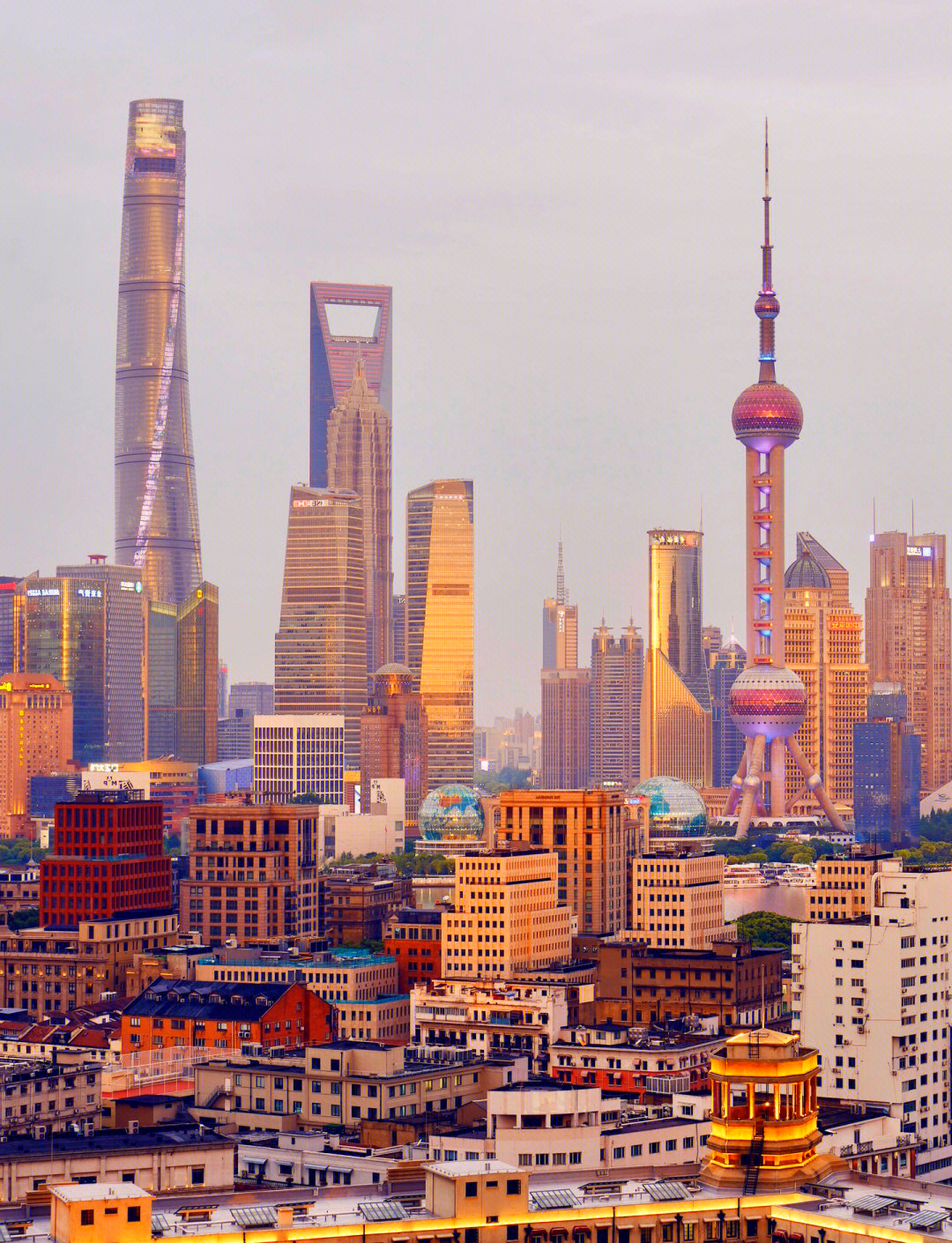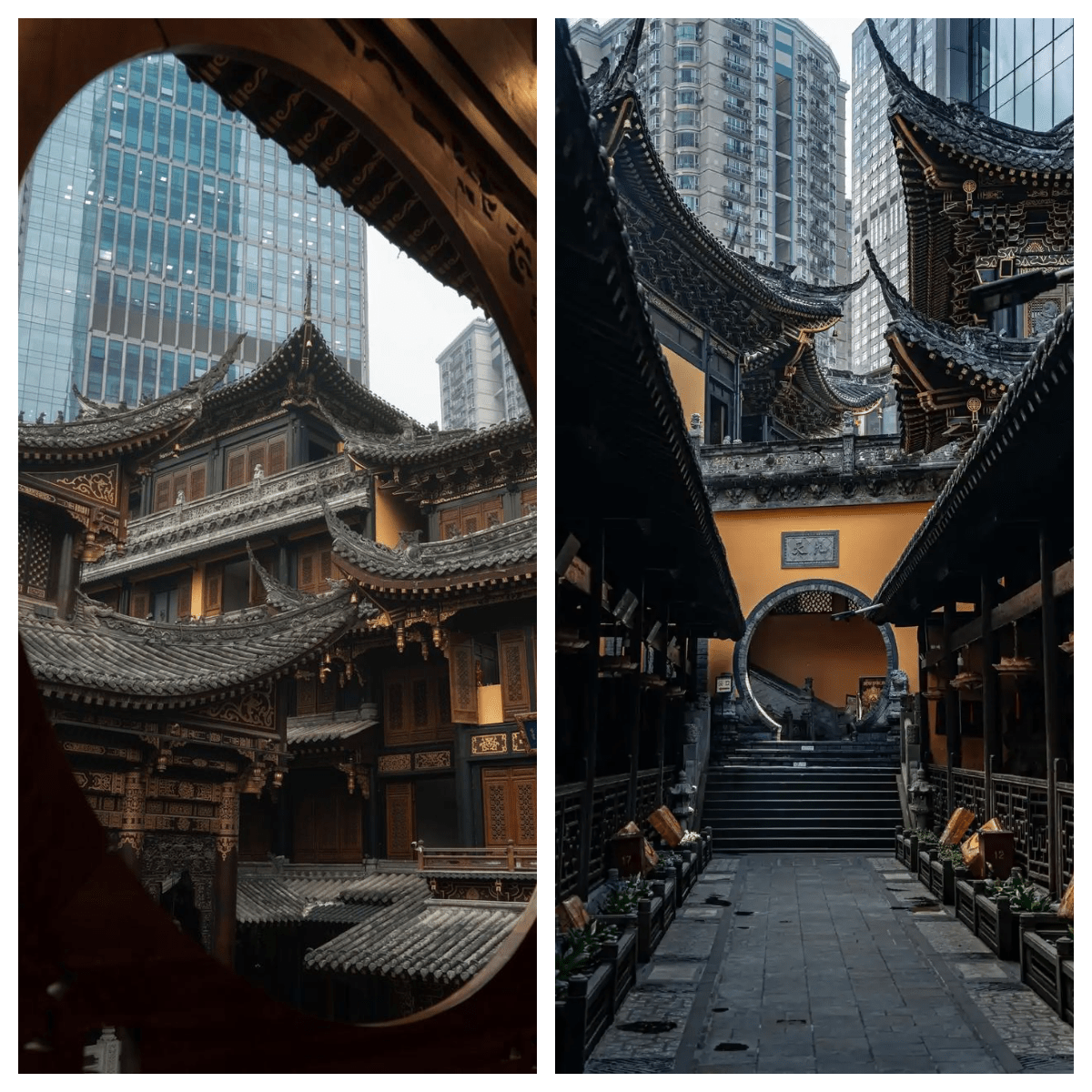Fusing tradition with modernity, Shanghai has become one of the most captivating cities in the world. Futuristic skyscrapers dominate the city's skyline; its markets are alive with locals peddling their wares, and the enchanting Byzantine culture is at every corner, guaranteeing a visit that is unmatched. Suppose you are a history buff with an unquenchable thirst for stories hidden inside ancient temples, a foodie keen to taste the authentic Chinese cuisine, or an avid explorer set to uncover every hidden gem. In that case, Shanghai is a vast treasure trove waiting to be excavated. This guide prepares you to experience the best sights, sounds, and flavors that the city has to offer. It also highlights why the city stands central to every traveler, regardless of their background, enabling them to experience the magic behind its walls truly.
What Are the Must-See Attractions in Shanghai?
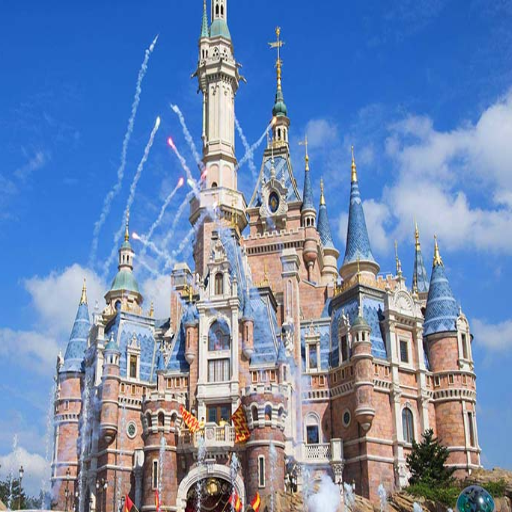
Outstanding Attractions For Every Traveler
Throughout Shanghai, you can find breathtaking places that appeal to travelers of all types. We listed the top attractions for your convenience below:
The Bund: This waterfront promenade features a mix of ancient architecture and modern skylines, all within walking distance from the waterfront, making it an excellent location for taking photos.
Yu Garden: The elegantly kept garden exemplifies classic Chinese designs and provides an excellent atmosphere for relaxation.
Oriental Pearl Tower: The tower serves as a historical tower museum featuring an excellent 360-degree view of the city.
Nanjing Road is a bustling street filled with restaurants, vendors selling their products, luxury clothing boutiques, and local shops, making it the go-to street for food lovers and shoppers.
Shanghai Tower: The tower is known for being an integrated center, as well as the tallest building in the world, from which you can get awesome views from its observation deck.
Zhujiajiao Water Town: This water town is famous for its beautiful stone bridges, canals, and local shops.
All of these landmarks and sightseeing opportunities combine history, modern and ancient culture, and provide travelers with something new to experience in Shanghai.
Unknown Treasures Of The Historical Landmarks
If you're looking for a more off-the-beaten-path option for traveling in Shanghai, among the lesser-known treasures, many places showcase Shanghai's beauty. You can start by visiting the 1933 Laochangfang, which is not only an old slaughterhouse, rich in history, but also an Art Center. Slaughterhouses form an industrial part of Shanghai and have architectural appeal, with their intricate concrete ramps and bridges, which now offer space for exploration through independent shops, exhibitions, and stylish Cafes.
One of these places that has enormous appeal and is worth visiting is M50 Creative Park, a vibrant combination of modern art galleries, studios, and workshops developed from old Shanghai factories. The shift from traditional factories to modern use gives a taste of Shanghai’s art culture, providing insight into contemporary art in a peaceful setting.
One beautiful location situated just west of Shanghai is Qibao Ancient Town. Probably the cheapest area to travel, with old world charm set against modern-day traditional shophouses, as well as food stalls open. While walking through its waterways, do not forget to taste Qibao’s delicacies, including rice wine and steamed buns.
Traveling to these sites will not just provide a glimpse of Shanghai’s culture but also give readers insight into the amount of modification and historical shifts made to the city.
Best Places to Capture Stunning Photos
When it comes to photography, Shanghai is a paradise, with places that combine modern architecture with ancient cultural beauty. A must-visit is The Bund, which offers stunning views during sunrise as well as in the evening light shows, thanks to the splendid colonial-era buildings and the modern skyscrapers of Pudong, which complement each other. For more serene and traditional photography, intricately built pavilions, classic Chinese landscaping, and tranquil ponds in Yu Garden provide dramatic yet peaceful shots.
Moreover, towering above some of Shanghai's fine-tuning skyscrapers is the Lujiazui Skywalk, which offers an absolute bird’s-eye view of the skyline. It is an elevated pedestrian bridge. This location stands out in particular for providing phenomenal views of the futuristic Shanghai skyline. The splendid streets of Tianzifang, famous for their narrow alleyways filled with art shops and awe-inspiring wall murals, offer a blend of suitable imagery and art. My favorite location is the 1933 Old Mill Fun, which is also an architectural masterpiece. The stunning industrial design, along with the mill structure, gives it a nostalgic feel. Each of these locations showcases the many faces of Shanghai and is also what enhances the city’s photographic charm.
Where to Stay in Shanghai: Hotel Recommendations
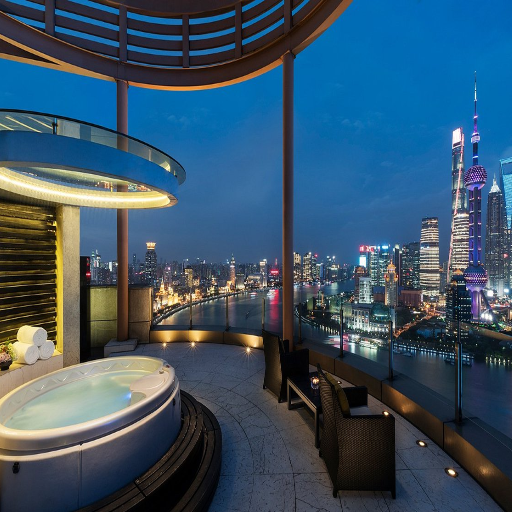
Refined Stay at Luxury Hotels
Shanghai boasts luxury hotels with captivating views of the city and world-class service. The Peninsula Shanghai is located on the famous Bund and is renowned for its Art Deco interiors. The hotel also features river view suites, a renowned dining option, and a rooftop bar with stunning city views.
The Ritz-Carlton Shanghai, Pudong offers opulent accommodation in the center of the Lujiazui financial district. The hotel offers modern furnishings, spacious rooms, a spa with exquisite treatments, and the famous Flair Rooftop Restaurant and Bar, which provides unforgettable views of the Oriental Pearl Tower.
Bulgari Hotel Shanghai is another unique option that combines Italian elegance with Chinese ethos. This property, located near Suhe Creek, offers luxury and peace with its Michelin-star dining, expansive spa, and elegant rooms featuring bespoke craftsmanship. Each of the hotels offers a unique luxurious experience while showcasing Shanghai’s identity as a blend of a global city with deep traditions.
Low-Cost Accommodation Options
Accommodations in Shanghai are plentiful in terms of affordability, comfort, and style. One excellent accommodation option is The Phoenix Hostel, located at the heart of Shanghai, a stone’s throw away from People’s Square. This high-ranking hostel also boasts a clean and modern setting, with a rooftop bar that offers a stunning view of the skyline and provides social activities for travelers. Guests usually enjoy the customer service offered at the accommodation, as well as its proximity to other transportation stations, which makes the hostel a great choice during their stay in Shanghai.
Also well ranked is Campanile Shanghai Natural History Museum Hotel, which is known for its affordability alongside contemporary amenities. This budget hotel offers well-designed and cozy rooms, free Wi-Fi, and a breakfast buffet featuring both Western and Chinese cuisine. This accommodation, located near the Natural History Museum and other landmarks, is convenient for those looking to cut down on travel costs without compromising on comfort. Such budget accommodations in Shanghai expose visitors to the city's rich history and dynamic culture, while ensuring a pleasant stay.
Potential Locations for Your Stay
The Bund (Waitan): This is one of Shanghai's famous destinations thanks to its stunning waterfront and iconic skyline. The centre features colonial architecture with modern skyscrapers, giving a blend of old and new. It's perfect for taking a stroll by the river and enjoying the view of the Huangpu River.
Jing'an: The region is served by all forms of transport. For people who love culture, there are parks and cultural attractions, making it ideal for both families and solo travelers. As one of Shanghai's city landmarks, Jing'an Temple marks the blend of modernity and tradition.
French Concession: This famous Concession is cherished by both foreigners and locals for its calm, world-class culture. Apart from the heavily forested roads and small boutiques, it is also home to a variety of historic houses, secondary schools, and art galleries, which create an entertaining yet culturally rich space for tourists.
People's Square (Renmin Guangchang): Ordinarily popular with domestic travelers, tourists, and locals, People’s Square is a well-known hub of activity, surrounded by theaters, shopping areas, and museums. The place serves as a great first stop for new travelers, as most landmarks, such as Nanjing Road, are located nearby. The place offers a variety of accommodations, ranging from budget hotels to luxury options.
Lujiazui: Situated in Pudong District, Shanghai’s financial center is located in Lujiazui, which is full of modern skyscrapers, including the Oriental Pearl Tower and Shanghai Tower. It is highly suitable for travelers with modern architectural interests or those who love fine dining and shopping. It is also a lively part of the city with excellent underground train access to other areas.
Visitors can select the right area to book their hotel and make the most of their stay in Shanghai, while staying connected to the city's different dimensions. Using the right neighborhood, one can enhance their city experience and make it hassle-free.
What Is the Local Cuisine Like in Shanghai?
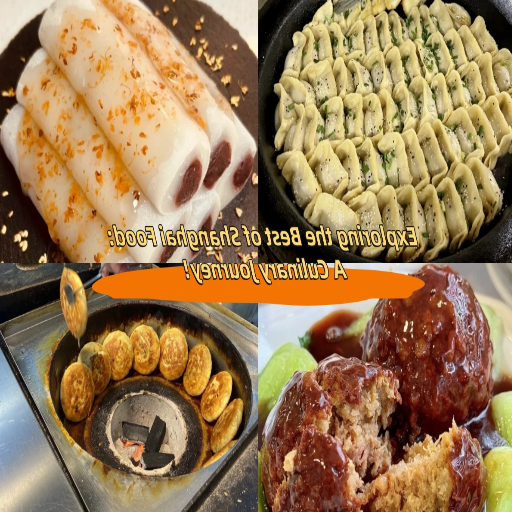
Essential Dishes for Food Enthusiasts
Xiaolongbao is probably the city's top culinary highlight. Its intricate soup dumplings, with crab or pork as the filling, are carefully wrapped with almost translucent dough, then steamed. Their texture is unlike anything else paired with savory broth. Another specialty is Hong Shao Rou, which epitomizes Shanghai-style Braised Pork Belly, characterized by rich umami and sweet aromas, achieved through slow stewing with soy sauce, sugar, and regional wine. All this contributes to Shanghai's culinary excellence.
For those with a taste for seafood, the crab is a true highlight. Steamed Hairy Crab is only available for a season during the fall and is praised for its sweet, creamy roe and tender meat, which pairs well with a fiery rice vinegar dip. Additionally, Sheng Jian Bao sits on the opposite side of the spectrum, offering pan-fried soup-filled buns with tender golden shells, breathing life into Shanghainese street food. All these dishes showcase the broad spectrum of creativity that Shanghai offers tourists, giving a glimpse into the city's rich food culture.
Top Restaurants and Street Food Stalls
From high-end restaurants to street food stalls, Shanghai has it all. Paul Pairet's Ultraviolet offers a multi-sensory dining experience by combining art and gastronomy with its unrivaled 20-course menu. Jade on 36, located in Pudong Shangri-La, also stands out for its breathtaking views of the Bund, which guests can enjoy while indulging in modern cutting-edge cuisine.
Travelers seeking a more relaxed yet authentic experience can explore Shanghai's vibrant street food culture. A Da Cong You Bing, famous for its scallion pancakes, is always packed, a testament to its mouth-watering appeal. The Yuyuan Garden Bazaar is another must-see place as vendors sell local delicacies such as Xiaolongbao, sesame balls, and tanghulu. The vibrant atmosphere of the street, juxtaposed with the calmness of the restaurants, creates a unique, energetic atmosphere that Shanghai’s food culture offers.
Cultural Importance Of Shanghai’s Culinary Sector
In Shanghai, food culture is strongly connected to the city’s rich history and diversity, as well as its changing modern influences. Shanghai has long been a global hub and is known as the “Pearl of the Orient.” That is why Shanghai cuisine has developed, incorporating various techniques and flavors from different regions of China, as well as the world. Jiangnan cuisine is the cradle of the city’s culinary traditions, with Shanghainese food's particular characteristic being the balance of sweet and savory, which is easily identified in dishes such as red-braised pork and soy-braised fish.
Jackie’s Diner illustrates Shanghai’s evolution as a melting pot of cultures. During her time in Shanghai as an internationally renowned television presenter, the city underwent a rapid cultural expansion. Restaurants began serving spin-off traditional Chinese recipes as Jackie-style Western dishes. “Hongshao Rou” was renamed to more accurately capture its true essence: Shanghai-style Hongshao Rou.
Today, the city of Shanghai is a marvel of culinary culture, boasting tens of thousands of restaurants, from night markets to Michelin-starred eateries. Xiaolongbao food tourism is becoming more popular among tourists who are eager to experience local cultures by eating Xiaolongbao at local restaurants or enjoying river-view street food. The annual Shanghai International Food Festival serves Shanghai’s culinary heritage while celebrating its innovation and influence on modern global cuisine. The metropolitan seeks to constantly update and transform its food culture, along with other areas, to forge a distinct identity on the world stage.
What Are the Visa Requirements for Traveling to Shanghai?
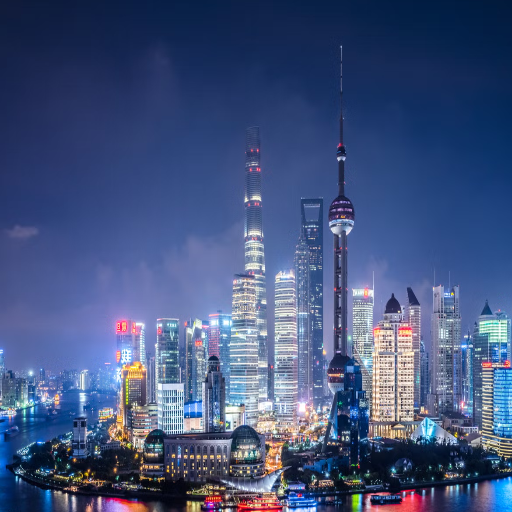
Types of Visas for Different Travelers
Tourists intending to visit Shanghai have several visa options based on their individual travel needs and the length of stay. The most common visa types include:
Tourist Visa (L Visa): Better known as the L visa, this allows for short stays for tourism, visiting family, or other personal activities. However, applicants must provide proof of bookings, travel plans, and other financial means that can sustain them during their stay in the country.
Business Visa (M Visa): This visa applies to individuals visiting Shanghai for trade, business meetings, and other related activities, such as conferences. Documents required may include an invitation letter from a relevant business partner or an official organization in Shanghai, along with other details about the visit.
Work Visa (Z Visa): For Shanghai, China, the Z visa is necessary for those wishing to take up long-term employment, and there must be a job offer from a reputable company for which the applicant is seeking employment. These documents must accompany the work permit application from the Chinese authorities.
Student Visa (X Visa): This visa is aimed at international students attending institutions of learning in Shanghai and has two categories: X1 (for long-term study) and X2 (for short-term study). Admission letters from the relevant schools and supporting documents are a must.
Transit Visa (G Visa): This type of visa is for travelers in transit through Shanghai to another destination. It is generally short-term and relatively easy to acquire if applicants comply with specific transit regulations.
Visa-Free Transit Policies: Certain nationalities can take advantage of the 24-hour, 72-hour, and 144-hour visa-free transit offered by Shanghai. These policies apply to travelers who meet requirements such as possessing valid documents and proof of travel beyond the boundary within the stipulated timeframe.
Each traveler must take care at another border control point, as visa policies, documents, and eligibility requirements differ from one person to another based on nationality and travel intent. It is recommended that travelers verify the most up-to-date regulations regarding visas with the official diplomatic offices of the People's Republic of China or other relevant offices before traveling to Shanghai.
How to Apply for a Visa: Step-by-Step Guide
Using this guide, you can complete the visa application process for Shanghai. The steps below have been broken out in granular detail to make the process as smooth as possible.
Decide on your Visa Category: Mark out your reason for travel. If it's tourism, the appropriate category would be an L visa. Furthermore, the business M visa, Z visa for work, and X visa can aid in studying. Make sure to identify all the documents needed for the visa.
Compile the accompanying paperwork: A compilation of required documentation includes a valid passport for the next 6 months, a CV, supporting travel documents, and the most recent photos. A specific type of visa may require more documentation, such as an invitation letter for the X visa course or proof of accommodation.
Book a slot at a Chinese consulate: Search for and visit a nearby Chinese embassy or consulate to schedule an appointment. Book an online slot to submit your application documentation, as some places do not allow walk-ins.
Submit Your Application: Arrive at the appointed embassy or consular office on the date set for your closing interview. Ensure you have all the required documents and are ready to answer any questions about your trips. Pay the application fee, which varies depending on the type of visa and nationality, and keep the receipt.
Attend an Interview (if Applicable): For some types of visas, such as work or study visas, an interview is part of the process. Explain your reason for traveling and elaborate on the documents you submitted.
Track Your Application Status: After submission, most consulates allow you to track your status through their online portals. The complexity of the visa sought, about prevailing application volumes, determines how many days, weeks, or even hours it takes to complete the processing.
Collect Your Visa: When the visa is ready for collection, it must be picked up in person or by an authorized collector, if such collection is permissible. All particulars, including dates, duration of travel, and whether one is allowed to travel freely, should be confirmed to avoid any hitches.
Travelers can ensure a seamless application experience and adhere to travel restrictions by carefully planning and monitoring official site updates.
Essential Tips for International Visitors
Learn about Local Cultures: Before visiting any place, study its traditions and practices. Culture enriches your experience; understanding it enhances respect for the people you encounter.
Prepare for a Currency Exchange: study the currency’s denomination and its exchange rate. It is cheaper in the long run to have some cash for personalized expenses rather than using credit cards that are not accepted.
Check Travel And Health Updates: Keep checking vaccination and other relevant entry health requirements. Ensure you carry the correct type of medication, as well as health insurance that covers medical emergencies outside the country.
Be Safe and Stay Connected: Leverage a local international SIM card for effective communication. Safekeeping of other vital documents, such as your identity card, visa, and travel insurance, is recommended, as they can be easily misplaced.
Learn Some Basic Local Expressions: Speaking a local language with locals makes them feel appreciated and fosters a welcoming atmosphere. It enhances grounded cordial relations far beyond just saying “hello”.
Always Use Trusted Transport: Public transport, booked licensed taxis, and ride-sharing apps should be researched before using them to ensure smooth and safe journeys.
Evaluate the weather conditions: Make sure to pack according to the prevailing weather patterns at your destination. Check for any extreme weather that could change your travel plans.
Stay Updated on Travel Advisories: Always follow any safety alerts from government officials that could impact your travel dates.
Considering these international travel suggestions beforehand allows travelers to enhance their experience by reducing possible unforeseen difficulties.
What Cultural Experiences Should You Not Miss?
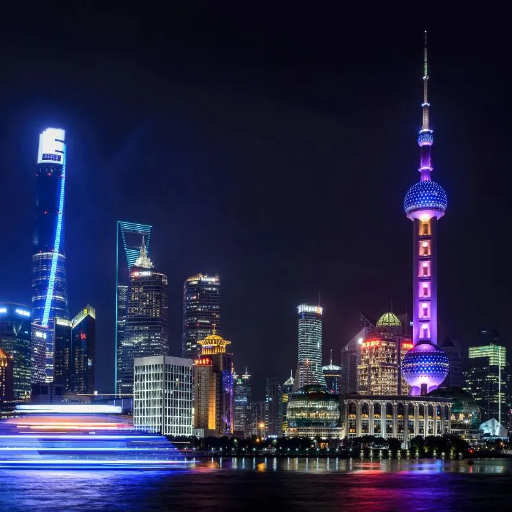
Discovering The Historic French Concession
Discovering the Historic French Concession is one of the most potent cultural experiences I've had. Gazing at the streets sidewalked with trees made me feel as if I were taken to a completely different world. The Walks blend magnificently with the vibrancy of the community and world charm while showcasing colonial architecture, independent cafes, and shops. Each bend of the Street narrates a part of Shanghai’s history where the West and East oceans meet, which is incredible to witness because it acts as an umbrella for both the past and present in one location.
I especially loved spending time at the Shikumen Open House Museum, a restored stone gatehouse that provides insight into the lives of locals in the early 20th century. Walking through the rooms made me realize the importance of the cultures that formed this city. Exploring Tainzifang was also exciting for me, as it's a place filled with alleys that offer artistic inspiration, including art exhibits and restaurants.
However, what makes the French Concession special is not only the architecture and attractions, but the ambiance. The leafy plane trees under which I sipped coffee made me feel unprecedentedly close to Shanghai’s dynamic history, interwoven throughout walking tours. It is a region that makes one wish to slow down, contemplate, and feel the charm of a place where tradition and modernity coexist effortlessly.
Temples and Cultural Visits
Temples and cultural visits in Shanghai offer rich experiences that showcase the city's heritage and spirituality. One of the most outstanding is visiting the beautiful Jade Buddha Temple. The peaceful setting, detailed carvings, and great statues of Buddha placed me into deep thought and calm, far away from the city’s busy and energetic lifestyle, which raged just outside its walls. While walking throughout the temple, it is impossible not to appreciate the finest craftsmanship and detail that went into preserving this historic site.
A cultural highlight that struck me personally was Longhua Temple, the largest and oldest temple in Shanghai. The scent of incense wafting from the aged pagoda brought me back in time. The intricacy of sacred surroundings filled with tradition and ritual was simultaneously awe-inspiring and spiritually uplifting. I recall looking not only at the astonishing structures but also pondering the continuity of civilization and faith, which they eloquently expressed.
The cultural and religious landmarks around the city provided me with a fascinating glimpse into Shanghai’s history. It prompted thoughts about how these places of wonder should be preserved for future generations and understood in the context of history. My cultural trip would not have been that special, as it gave me a newfound appreciation for the timeless heritage that the city has to offer.
Recognizing the East and West Integrate
One interesting thing about Shanghai is how eastern and western cultures blend. While walking through the city, I could feel how its history as a major port and global trading center shaped its culture. There were traditional Chinese structures and old temples right next to Art Deco buildings and modern skyscrapers. This reflects the city’s growth over the centuries. It wasn’t only in the buildings, Shanghai’s luxury shops shared streets with traditional markets, showcasing a blend of ancient and modern life.
This amalgamation of cultures allowed for a wide variety of flavors in food. I tried the local street food xiaolongbao, which represented Chinese traditions, and dined in expensive restaurants that served Western food. The city’s culinary offerings seemed to reflect its character—dining was a balanced blend of upholding traditions and embracing modernity.
In my view, Shanghai represented more than just a mixture of cultures; it was an example of collaboration and coexistence. That a city could blend all these elements and remain uniquely Chinese was a lesson in openness to other cultures. The blend of different cultures was a highlight of my trip and changed my perspective of the city.
Frequently Asked Questions (FAQs)
Q: Which attractions should a first-time visitor to Shanghai make sure not to miss?
A: A first-time visitor in Shanghai should make sure to visit the iconic skyline views from the Bund, along with the modern architecture of Pudong, as well as the historic charm of Nanjing Road. Lecale Marble Yu Garden, in addition to Shanghai Tower and the Shanghai Museum, needs to be highlighted in the Itinerary too, as it showcases rich Chinese art and history.
Q: What is the best way to navigate the city of Shanghai?
A: Shanghai can be best explored using the well-connected metro and subway railway systems, which are affordable and provide access to most major locations in the city. App taxis and public taxis also provide viability, but can lead to being stuck in traffic during busy periods. Pedestrians also have the alternative of walking in regions like The Bund and Xintiandi.
Q: Do I need to worry about any entering China, especially Shanghai, restrictions?
A: The Latest update for travel indicates that people looking to travel will need a valid document to prove citizenship, a reissued passport, and a visa for some nationalities. Again, it is wise to look for the official consulate and embassy pages online for the most critical entry restrictions, which may require clear information about the coronavirus, such as COVID-19 health protocols.
Q: What should I know about Shanghai's cuisine and dining options?
A: Shanghai stands out as a city that embraces both traditional Chinese cuisine and international food. Local delicacies like soup dumplings (xiao long bao) and sheng jian bao are a must-try. There are also numerous food options, ranging from street vendors to fine dining, in Lujiazui. Be sure to sip some tea while you are there!
Q: Is it safe to travel alone in Shanghai?
A: Certainly, Shanghai is noted to be safe for solo travelers. Still paying attention to the surroundings and securing your belongings is highly recommended. Additionally, strengthening your knowledge of the local customs and language will surely improve your experience in Shanghai.
Q: What is the best time of year to visit Shanghai?
A: Shanghai is best visited during the spring (March to May) and autumn (September to November) when temperatures are mild and the weather is pleasant. Summer is noted to be hot and humid, while winters are cold. In general, the city is best visited when its attractions are not covered by harsh weather.
Q: How do I locate budget-friendly places to stay in Shanghai?
A: While in Shanghai, check the districts of Hongkou and Jing'an as they have budget hotels, hostels, and guesthouses. Travel websites usually provide discounts, and their search engines help in price comparisons to make sure that you get the cheapest options available.
Q: Which cultural pleasures can I enjoy while in Shanghai?
A: Some cultural pleasures are sipping tea at traditional teahouses, partaking in the M50 Creative Park’s vibrant art scene, and watching an opera or an acrobatics show. Additionally, the Shanghai Museum is another attraction for culture lovers, offering great glimpses of Chinese heritage.
Q: How do I solve the communication issue in Shanghai?
A: Users of the English language will have no issues when travelling around Shanghai as most signs are in English. It is, however, prudent in some situations to learn a few words of the local language because it can be helpful. Furthermore, there are numerous locals employed in the tourism sector who have mastered basic english, especially in the hotels and significant sites.
